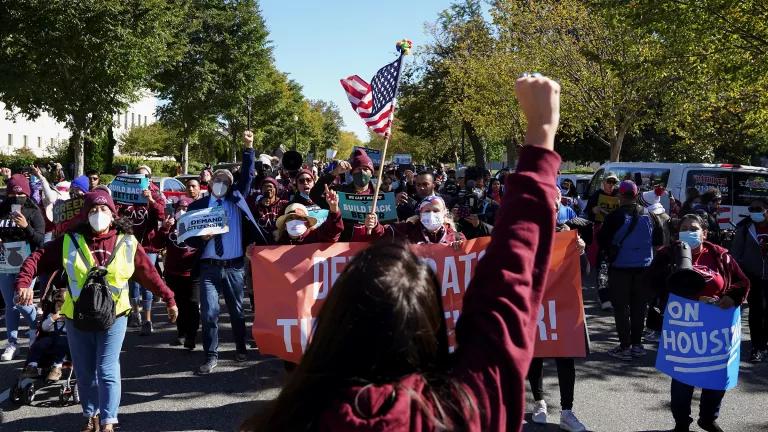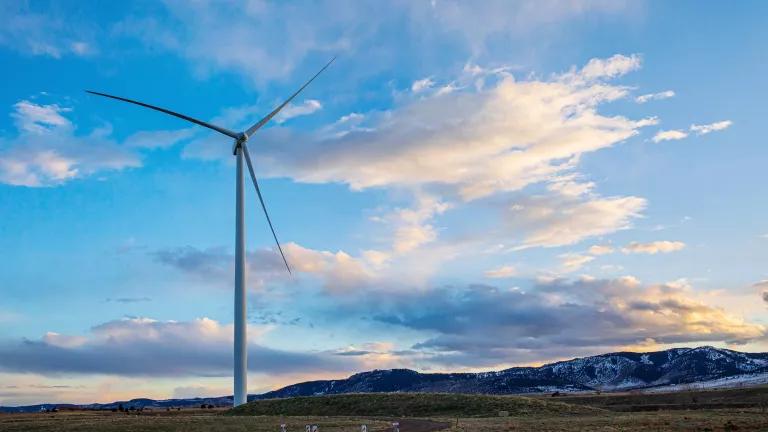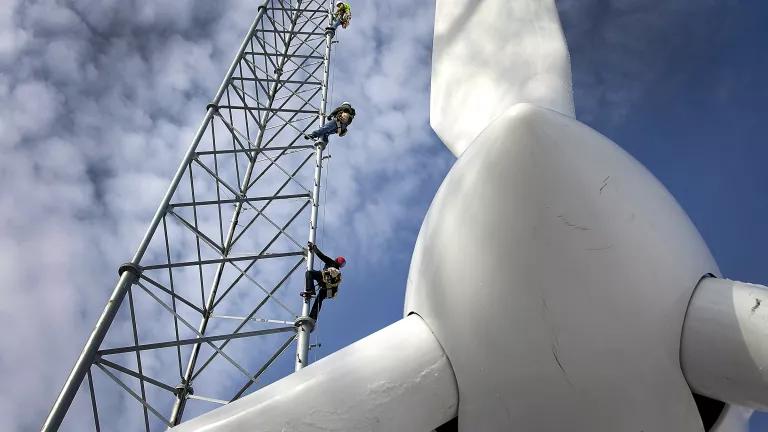Building a Climate-Resilient Grid
Record heat and drought are raising the risks of summer brownouts. To limit these climate risks in the future, Congress must act and speed up investments in a clean and resilient electricity system.
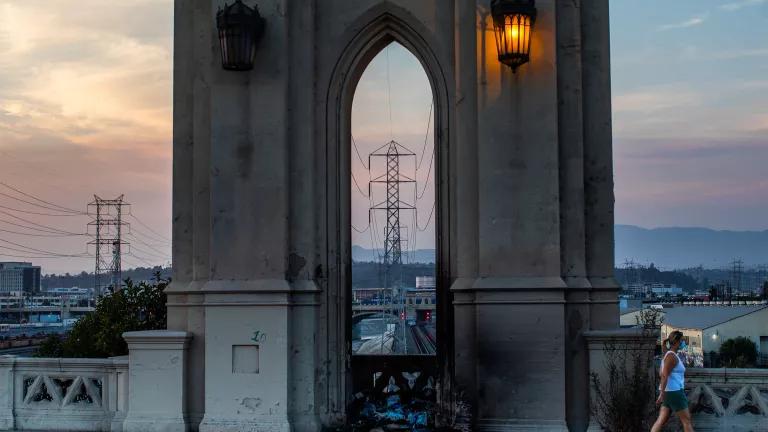
High tension AC towers loom in the background as a woman walks across the Fourth Street Bridge in Los Angeles.
Apu Gomes/AFP via Getty Images
Record heat and drought are raising the risks of summer brownouts. To limit these climate risks in the future, Congress must act and speed up investments in a clean and resilient electricity system.
Our electric grid is more than a century old, and it’s not up to the challenges before it. Climate change is causing stronger storms, hotter heat waves, and more extreme flooding. Old fossil-powered generating plants fuel these climate impacts. Moreover, they can’t compete in the market and are retiring. And changes in the economy are rearranging the way we use electricity and how much of it.
For this summer, grid operators and utilities should have the tools they need to keep the lights on and the air conditioners churning under typical weather conditions. But if there is extreme weather, there’s the potential for reliability challenges, according to a recent report issued by the Federal Energy Regulatory Commission. In other words, climate change is putting our power system at risk.
The conclusion is clear: We must transition away from the fossil fuel power sources causing climate change and invest in a grid that is resilient to storms, high heat, and flooding. For this summer, that means maximizing the use of energy efficiency and rapid demand response programs to keep the lights on. In the longer term, we need to focus on getting new clean energy resources connected to the grid and building the high voltage transmission lines needed to get this power to consumers. These transmission lines are crucial to a resilient grid and can lead to overall consumer savings.
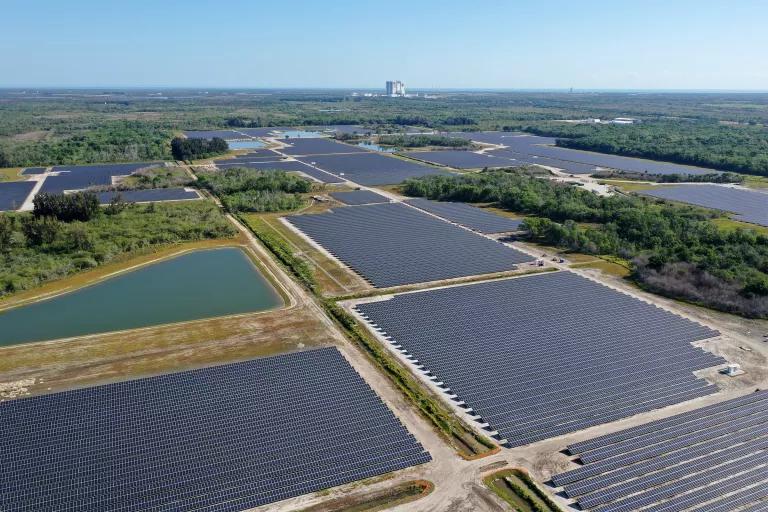
A solar facility under construction at NASA's Kennedy Space Center contains roughly 250,000 solar panels. It will eventually produce enough energy to power approximately 15,000 homes per year.
A new NRDC policy brief being released today demonstrates the benefits to grid reliability from the climate legislation being considered in Congress. To help increase grid resiliency, this legislation would:
- expand long-distance transmission lines;
- encourage more solar and wind power, especially in energy justice communities;
- curb energy demand through weatherization and energy efficiency;
- invest in communities where old coal mines or fossil fuel plants are closing; and
- spur the sales of electric vehicles, which can become backup batteries for customers.
Congressional action, along with actions from states, public service commissions, grid operators, and federal regulators can spur clean energy, energy efficiency, rapid demand response, electricity storage, and transmission lines so that we can have the clean, reliable, and resilient electrical system we want and need.
Defenders of fossil fuels often blame renewables like wind and solar for any reliability problems, but that’s a false narrative. We have learned in storm after storm that no one power source is perfect: Coal piles freeze, gas lines stop flowing, and nuclear plants need to shut down before a storm surge hits. Last winter, natural gas fuel supply issues caused 87 percent of the outages in Texas during Winter Storm Uri. And this summer is no different: A recent North American Electric Reliability Corporation assessment noted that coal-fired generators are having trouble getting fuel because of stressed supply chains and that natural gas supplies might be tight in the West.
My colleague J.C. Kibbey provides a deep dive on the underlying causes of the supply crunch in the Midwest, highlighting how outdated thinking and regulatory hurdles stymied the adoption of affordable clean energy. And Samantha Williams provides an excellent overview of what we need to do in the short and medium terms to make progress on clean energy. While she focuses on Michigan, these lessons should be carried throughout the entire nation.
In the short term, every utility should be expanding energy efficiency and rapid demand response programs to limit the risk of blackouts. That, along with power imports from neighboring regions, should be able to get us through the next few months. But we also need to plan for the future, investing today in building a nimble and resilient electrical grid, one that can withstand the harsh weather and the urgent need for reliable, 24/7 electricity.
Key to this are changes to the transmission and interconnection rules that are necessary to create a reliable and resilient grid for the years and decades to come. At MISO and PJM, there are thousands of solar and wind projects that are ready to be built but are stuck in line. For example, there are more than 100,000 megawatts of clean energy in the MISO simply waiting to be interconnected to the grid. Even after accounting for the fact that only a portion of renewable energy's installed capacity is counted toward resource adequacy and that some of the generation in the queue won't be built, these and future additions can replace retirements. But the process for connecting to the grid is mind-bogglingly slow, and changes must be made to speed up the process to keep pace with retirements.
One way to get more clean energy to consumers is by building more high-voltage power lines. These lines transport electricity from where it’s generated (often in rural areas and, eventually, offshore) to the cities and towns in need of power. They are the key to unlocking clean energy and ensuring it can deliver on its promised benefits—lower energy prices and more reliable power. Building more transmission lines between regions also allows a region experiencing extreme weather to import power from its neighbors where the weather may be milder. According to a FERC-NERC report, this ability likely saved the residents of the Midwest and Great Plains from the disastrous consequences suffered by Texans last winter during Winter Storm Uri.
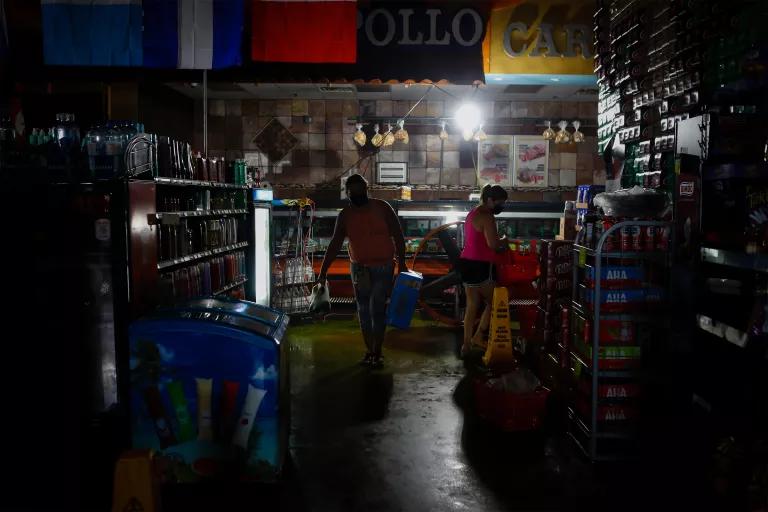
Residents shop at a grocery store in New Orleans after Hurricane Ida devastated the region’s electrical grid, causing a major blackout in September 2021.
Eva Marie Uzcategui/Bloomberg via Getty Images
A resilient grid means that when a storm comes, the failure of any one power plant or other power source can be overcome, with the grid standing up to the stress and continuing to provide power for consumers. This resilience should come from a diverse array of clean energy sources, increased energy storage capabilities, and transmission lines to connect power sources to consumers across the country.
We need a system that can adapt and respond to whatever is thrown its way. Given the reality of climate change, we can’t go backward on the clean energy transition. We need to build the grid (and the policies) to enable more clean energy to power our homes and businesses.
While states and grid operators have much to do in the short term, the single-biggest thing we can do to make our grid more reliable and resilient is to pass the clean energy legislation currently under consideration in Congress. It would provide billions of dollars in incentives to transition to clean energy, while ensuring that the lights stay on when we need them the most.
With the right investments now, we can build the future we want and need.
